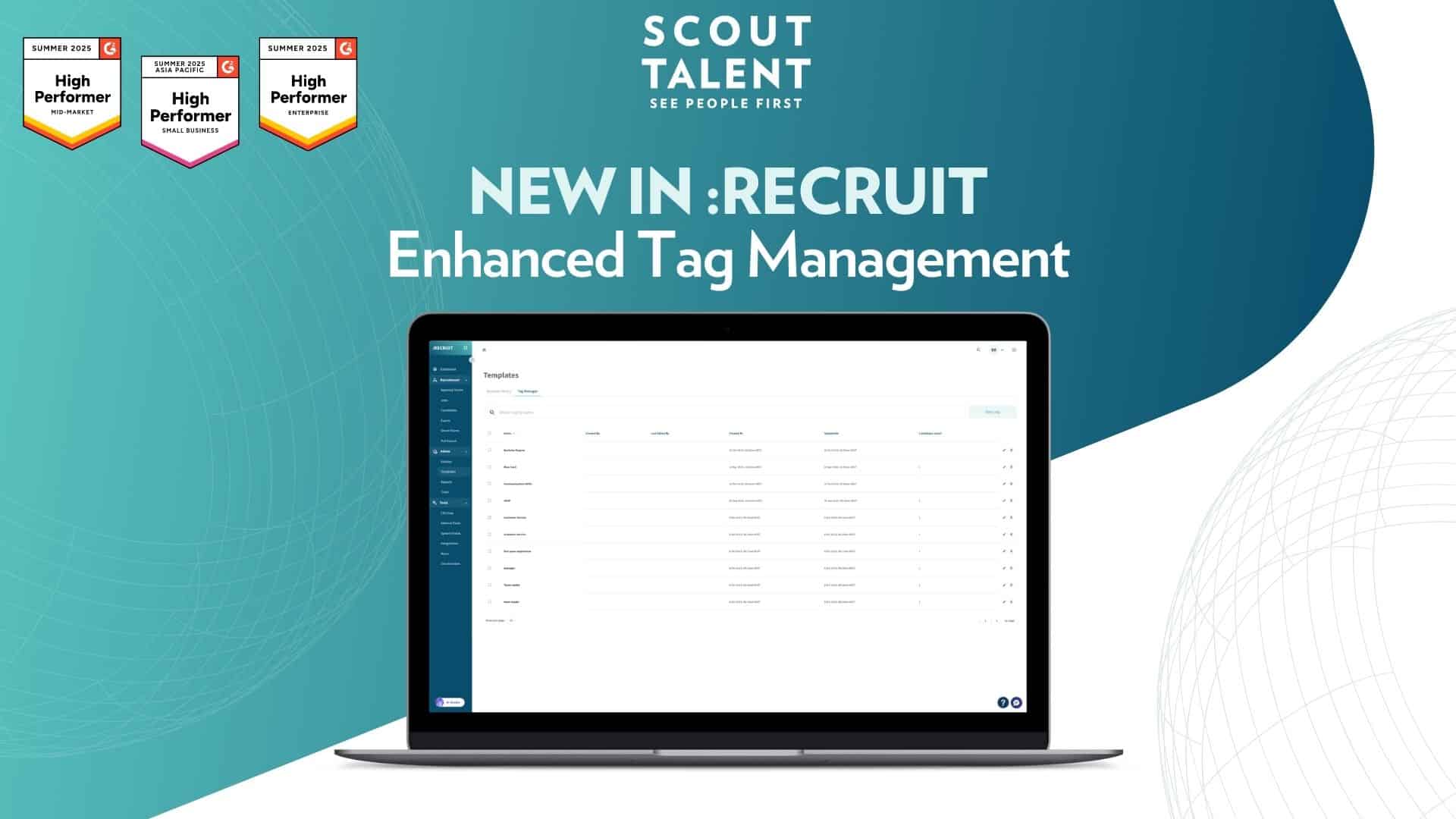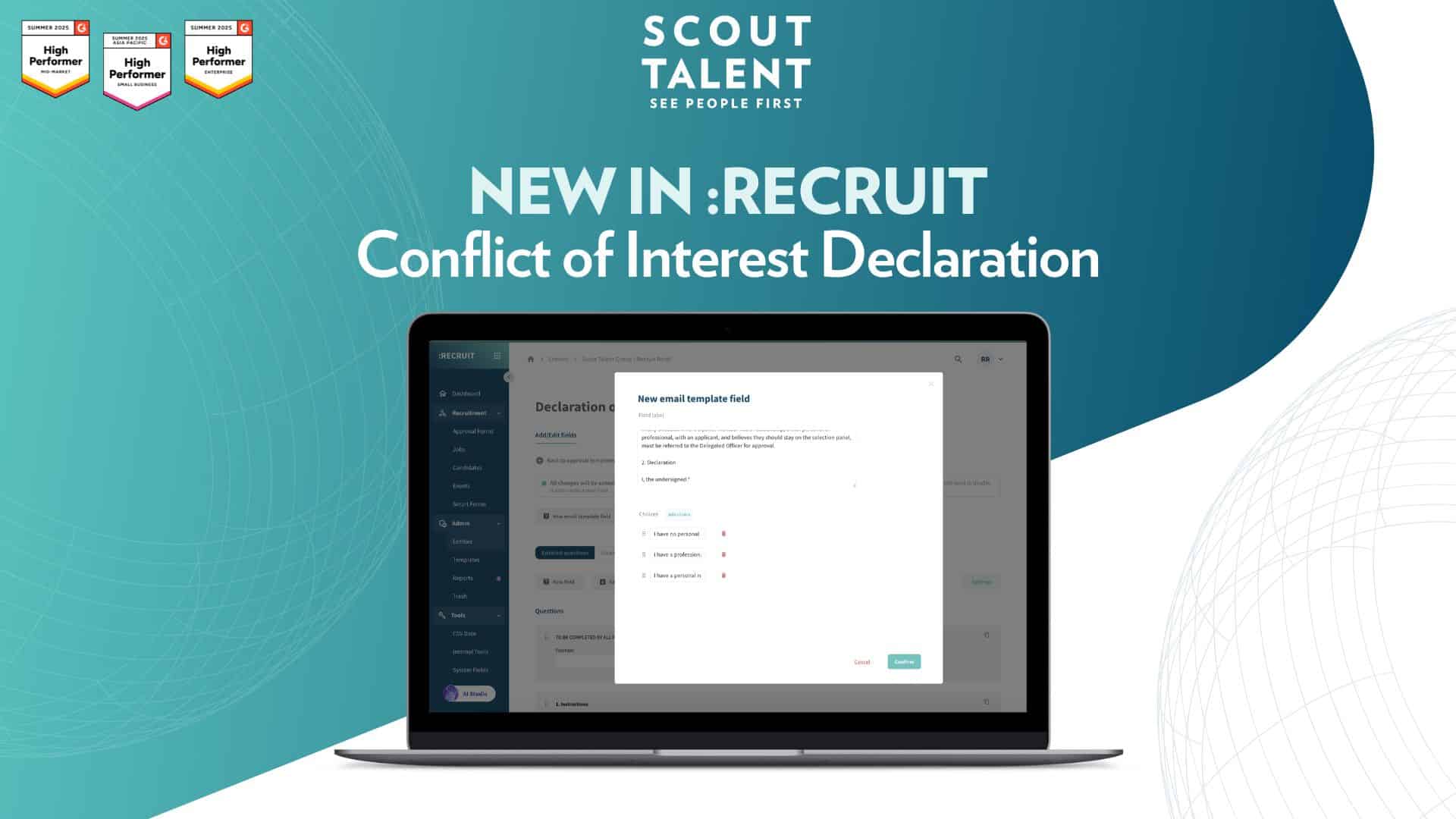Recruiting purple squirrels is a fast way to drastically (and unnecessarily!) reduce the size of your talent pool. Here’s how to overcome the hurdles preventing you from finding the ideal person to fill your vacancy. Instead of endlessly searching for “purple squirrels”, the perfect candidate who may or may not exist, rethink your selection criteria. Who knows, by using these strategies, you might discover the person you were looking for all along!
What is a purple squirrel?
In recruitment and HR, a purple squirrel is the perfect candidate for your role. They have all your ideal qualifications and experience, and are the ultimate choice for your vacancy! However, the difficulty in finding these candidates has given a second meaning to the term. Purple squirrel has come to mean the unobtainable. Just as they are impossible to find in nature, in real life, they are also almost a fantasy.
Let’s face it, the perfect candidate (or a purple squirrel) that perfectly fits every want and need your organisation has for a role is incredibly rare. Seldom do we come across a purple squirrel in the recruitment world who is actively searching for a new position. So, stop trying to catch the idyllic mythical creatures and start searching for the ideal candidate.
High-quality candidates don’t have trouble proving their worth and as such, tend to be snapped up by employers very quickly. So keep them engaging from recruitment marketing and advertising, during the application process and throughout the recruitment process. If they’re excited by your opportunity and engaged with the process, it’s less likely they’ll take up a role with a competitor.
High-quality candidates also tend to be pretty switched on, and won’t waste their time applying for roles if they deem the application process unnecessarily long or complex. Instead, they’ll move on to the next role they see and you’ll lose them. So it’s important you design your process with your ideal candidate in mind.
You can also use the right technology to speed up your shortlisting & selection process. For example, use your Candidate Management System to set up automatic filters to exclude ineligible candidates immediately. For example, if your role requires someone to be an Australian citizen or permanent resident, add a filter that automatically marks an application as ineligible.
The following tips will help you overcome the hurdles preventing you from finding the ideal person to fill your vacancy, so you don’t waste time hunting purple squirrels who may not exist. Perhaps you’ll discover that they were just the squirrel you have been looking for!
Review your selection criteria
Finding your ideal candidate begins by understanding the requirements of your role. Conduct a critical assessment of which skills and experience are vital for your role, and which you can compromise on.
After establishing your selection criteria, use your requirements in a compelling way. At Employment Office, our clients typically ask for advice about how to display their selection criteria and use it in their screening process. We always recommend online screening questions as the first-round application process.
Check out our article: “How much can you ask of a candidate?”
Use screening questions effectively
There are a number of common mistakes we see when it comes to online screening questions. We recommend using online screening questions as your first round of screening to save you time reading long cover letters and resumes. However, there is a bit of an art and science to it.
One of our clients wanted to ask one screening question to address every piece of selection criteria. As you can imagine, this would have been a long and tedious application process for candidates! This impacted the number of applications they obtained. In fact, our Specialists were able to report on strong click-through rates, but high drop-out rates
Ideally, choose between three to eight screening questions, and find efficiencies where you can. For example, if your goal is to assess communication skills, instead of asking a question about communication, you could instead use the screening questions as a whole to assess this skill. You’ll very easily be able to judge a candidates’ spelling, grammar and tone from reading their answers to other long answer questions.
Reduce the number of long-answer questions required for applications to increase the likelihood of great candidates applying for your role.
Interestingly, we recently conducted a survey with a large sample group of our candidates – that is, people who have applied for positions through our online application process – and the results were really interesting. It might surprise you to know that 76% of candidates enjoy answering screening questions.
“76% of candidates enjoy answering screening questions.”
So, don’t eliminate screening from your application process, but ensure you’re asking the right number of questions and the right kinds of questions.
Tailor screening questions for each role
It’s really important that you don’t use blanket questions for all your career opportunities.
Of course, there are common screening questions that may be necessary, such as working rights, and these questions tend to be easy check box answers that don’t impact the time it takes for candidates to apply. However, when it comes to long-answer questions, try to be specific in what you’re asking.
Tailor your questions to the position you are trying to fill and ask questions that will give you a clear indication right away if someone is suitable or not.
Don’t use too many screening questions
Asking too many questions is one of the most common mistakes employers make.
Numerous studies have discovered that as you increase the number of questions in your application process, the number of completed applications decreases.
Stick to approximately five questions where possible, and include a mix of check box, short text, and long text questions. Once you add more than six questions, you reduce your candidate by almost by half. If you go beyond 10 questions your dropout rate will increase exponentially.
Use written-answer screening question when necessary
Although you want to keep the application process brief, it’s important to ask a couple of long-answer or written-answer questions. This gives candidates the opportunity to share how their experience, knowledge or skillset applies to the role and why you should consider them over other candidates.
It also gives you the opportunity to learn information about your candidates that you may not have learned from their CV.
It’s a fantastic chance to assess their communication skills which, depending on the position, could be imperative. Personally, if we’re hiring for a team member who will be delivering copywriting services for our clients, written-answer questions are the most valuable source of assessing grammar, writing ability and attention to detail.
Depending on the position you are recruiting for and who your ideal candidate is, written-answer questions also act as a good indication of whether the candidates are invested in your opportunity and putting in effort, as opposed to copying and pasting short or irrelevant answers.
Don’t make screening questions too complicated
Although long answer questions are important and useful when utilised correctly, it’s important to make sure they are clearly worded. You want candidates to be able to understand exactly what you want to know about them so they are able to provide you with the most relevant and straight forward answer as possible.
Don’t use irrelevant questions
Stick to the questions you absolutely need to give you a first indication of whether someone should be considered further or whether they should be eliminated right away from your recruitment efforts.
Use screening question best practices
Many clients ask us about the best way to set up screening questions. We recommend not requiring cover letters, assessing for cultural fit and using behavioural testing.
Cover letters are quickly becoming extinct within the progressive recruitment space. They tend to be blanket statements that don’t do the best job of telling you what you need to hear to make a decision.
Include one screening question to understand candidates’ personal and behaviour characteristics. For example, ask them about what they’re are looking for in their next workplace, or what they like to do in their spare time, outside of work. Your goal is to attract candidates who will be the right organisational fit, (not purple squirrels!) and this helps you do just that.
Pair screening questions with behavioural testing. The best way to assess personal characteristics is by pairing screening questions with behavioural testing. Testing is a great way to gain deeper insights about developmental considerations and interview questions if you decide to progress candidates to face-to-face interviews.
“Remember, the right screening questions attract top talent.”
In addition to increasing your volume of applications, using these screening techniques will help you attract the right candidates to your position.
Overcome unconscious bias
Whether you know it or not, it’s almost certain you have either been the victim or perpetrator of unconscious bias.
By definition, unconscious biases are social stereotypes that one forms unknowingly about certain groups of people. Everyone holds unconscious beliefs about various social and identity groups which stem from a tendency to organise social worlds by categorisation.
Essentially, we all have and experience unconscious bias, it’s natural, but when it comes to finding your ideal candidate, it’s important to challenge yourself and your recruitment process to be as free as possible from unconscious bias.
If you let these biases creep into your process, it’s more likely you’ll have wider organisational issues such as lack of diversity within your workforce, and hiring the wrong people which we all know costs a lot of time and money! It can also lead to you recruiting for a purple squirrel, instead of your ideal candidate.
Check out our article: “How important is diversity in your hiring?”
We’ve certainly experienced some uncomfortable situations where hiring managers are set on hiring a candidate of a certain gender, age or background. This is the wrong way to approach finding your actual best fit. Step back and re-think who the ideal person is for the role.
In resisting recruiting purple squirrels, think about your ideal candidate and avoid the “perfect”, or you’ll always be disappointed. Determine the essential requirements of the person for your role and determine what you can compromise.
Recruiting purple squirrels could be setting you up for failure. Use this guide to work with your hiring managers and avoid looking for those elusive purple squirrels in favour of your ideal candidates.
Use screening questions specific to each opportunity you advertise, and use them to reduce your time shortlisting & selection and identify strong candidates from the start, beyond qualification or experience matches. Don’t let unconscious bias affect your perception of a person’s ability – or inability – to do the job. Shift your thinking from the type of candidate you tend to hire to what a different type of candidate could bring to the position or team. Avoid using pronouns when talking about your ideal candidate, and consider hiding information (i.e. hide names, gender, age) until you’ve completed the initial filtering process.
By designing a great screening process, you’ll reduce the frustration of trying to find those elusive purple squirrels, and instead attract more applications to find your ideal candidate more easily.
Interested in optimising your hiring process to avoid purple squirrels? Schedule a discussion with our Recruitment Advertising Specialists.



